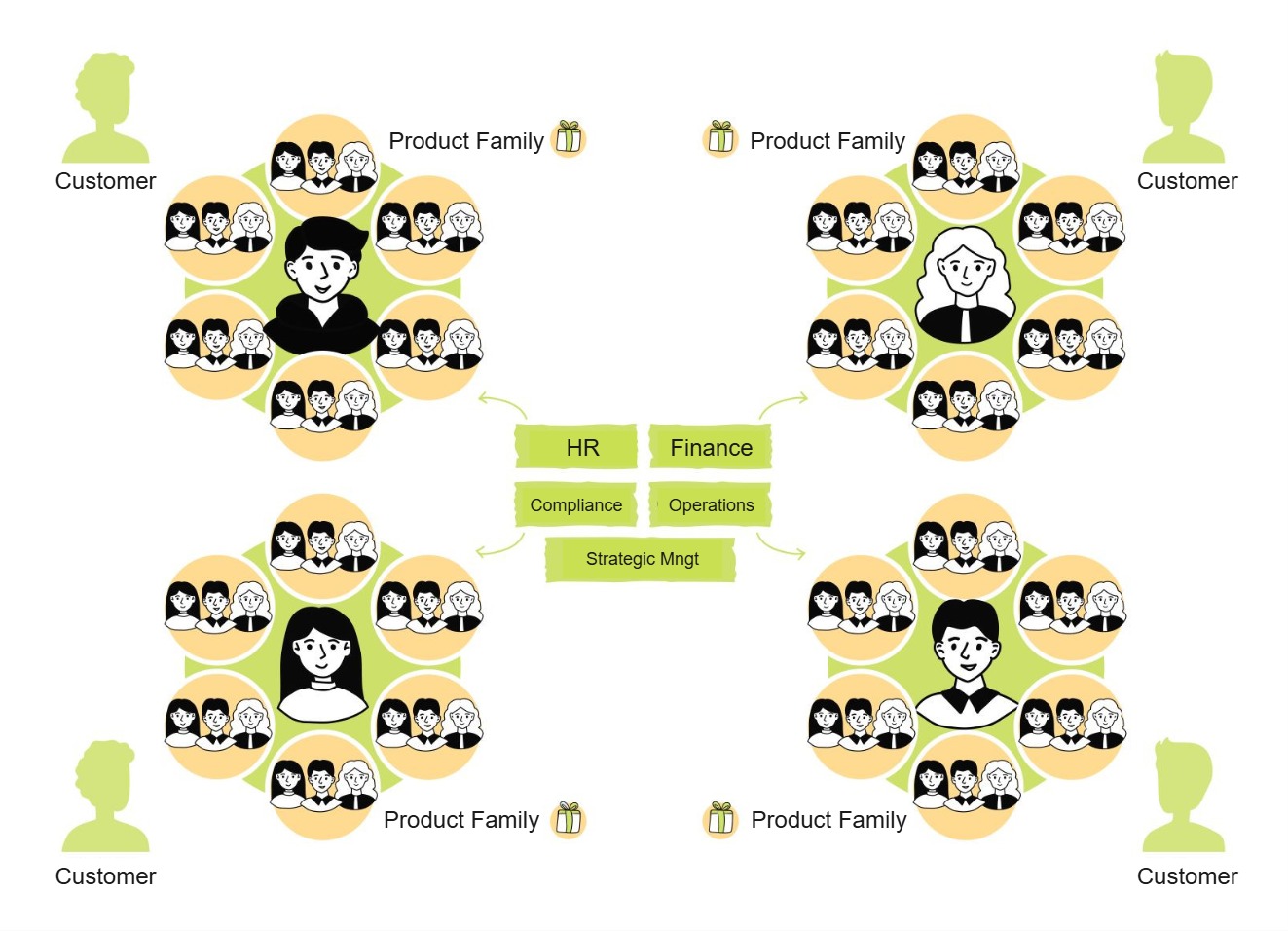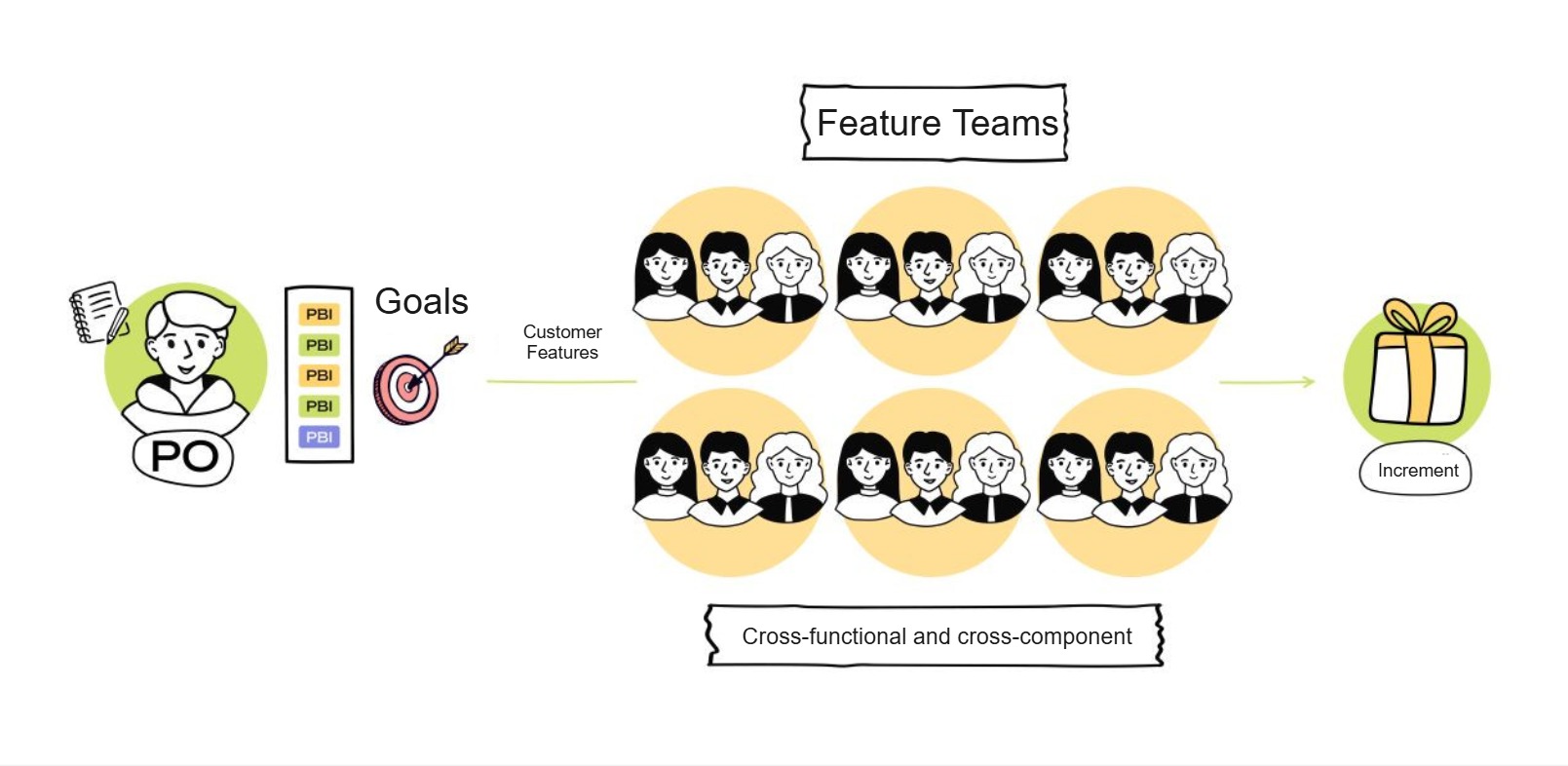In this article, I contrast the traditional and Agile organization using Jay Galbraith’s Star Model of organizational design. My goal is to show the full scale of changes required to transition to an Agile organization. Working constantly with senior management of large companies, I often observe that many of them underestimate the scope of transformation ahead.
Mental models
Management in traditional organizations believes that the whole improves through optimizing the parts individually. This is the legacy of Taylorism and the “divide and conquer” approach.
In Agile organizations, top management holds a different set of beliefs based on systems thinking: the effectiveness of the parts depends primarily on their interactions, not on how each one is optimized on its own.
Strategy and organizational capabilities
Traditional companies follow in the footsteps of Henry Ford, pursuing a strategy of resource efficiency. They assume that high utilization of individuals, teams, and departments automatically leads to higher productivity and economies of scale. This strategy remains effective if your goal is to produce a large volume of standardized goods. For example, at the BeckO factory in Kirzhach (Russia), more than 2,800 identical washing machines are manufactured every day.
Agile organizations, by contrast, operate under conditions of high uncertainty, where productivity alone does not guarantee positive outcomes. According to data from A/B testing platforms and leading product companies (Microsoft, Netflix, Amazon), only 10–20% of hypotheses lead to significant changes in product metrics. Agile organizations recognize this and put rapid hypothesis validation and adaptability ahead of maximizing utilization.
Structure
Traditional organizations, in pursuit of economies of scale and resource efficiency, create functional departments such as IT, sales, marketing, risk etc. A functional structure is indeed an effective way to improve productivity and works well in relatively predictable environments where operational efficiency is the key advantage.

Functional organization
Agile organizations, however, understand that a functional structure will undermine rapid innovation and hypothesis validation. Instead, they establish autonomous product groups organized around products or product families (television, online cinema, lending, transactional businesses). These groups are led by Product Owners, who are given all necessary resources, authority, and responsibility for the financial performance (P&L) of their product family

Prototype of an Agile-organization with product groups
Within product groups, cross-functional and cross-component feature teams are formed. These teams can take on a wide spectrum of product-related features, which supports high adaptability and rapid hypothesis validation.

Cross-functional and cross-component feature teams
Processes and rewards
In traditional organizations, processes are designed to optimize the performance of parts (people and functions) individually. You will almost always encounter individual KPIs and success metrics tied to the performance of separate departments.
Agile organizations design their processes with a different focus: drastically reducing the time to validate hypotheses (Time2Learn). Individual productivity is not what matters. What matters is how quickly hypotheses are tested and risks are discovered. In this setup, teams and individuals will inevitably experience idle time — and that is normal. The emphasis is on learning speed and adaptability, not full utilization.
HR-politics
In traditional organizations, HR practices encourage narrow specialization, since it is seen as the key to productivity and economies of scale.
Agile organizations think differently. They recognize that the volatile environment they operate in requires people in teams to develop multiple competencies. In Agile organizations, skills ≠ people. Employees are expected to master two or more specialties to cope with changing technologies, requirements, and market conditions. This is how T-shaped and even M-shaped specialists emerge, able to combine diverse skills and flexibly adapt to changes.
Summary
Organizational design must consistently support the strategy and capabilities that companies choose for themselves. Traditional companies have followed the path of resource efficiency and economies of scale. Agile organizations operate in a highly volatile environment, which is why their organizational design is fundamentally different. We compared traditional and Agile organizations across Galbraith’s Star Model dimensions: strategy, structure, processes, rewards, and HR policies. The final comparison is presented in the table below.
Traditional Organization
Agile Organization
Strategy
Resource efficiency and economies of scale. The goal is maximum utilization of people, teams, and departments.
Operating in high uncertainty. The focus is on adaptability and rapid hypothesis validation (Time2Learn).
Structure
Functional units (IT, sales, marketing, risk). Suitable for predictable environments and scale efficiency.
Product groups organized around products or product families (e.g., lending, TV, online cinema). Each has its own P&L and autonomy. Within them, cross-functional and cross-component feature teams.
Processes
Optimization of functions and people separately. Individual KPIs and department-level success metrics.
Processes aimed at drastically reducing hypothesis validation time. Idle time of teams and people is acceptable if learning speed increases.
Rewards
Incentives tied to individual productivity and departmental performance.
Incentives tied to team learning speed, adaptability, and value delivery.
HR-politics
Narrow specialization is rewarded — the key to productivity and economies of scale.
Development of multi-skilled employees (T-shaped and M-shaped). Skills ≠ people. Employees master multiple specialties to adapt to changing technology, requirements, and environment.
